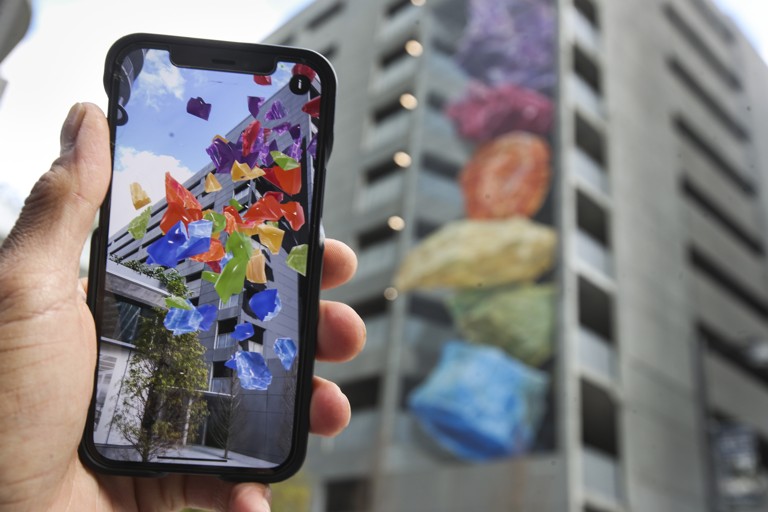Arts & Ideas
Toronto Artist Uses Augmented Reality to Transform Public Murals
A Toronto-based visual artist is integrating AR technology into city murals, offering passersby an interactive art experience that blends urban expression with digital storytelling.
July 08, 2025 at 05:20 — By Allison Hill, Leaf & Thought

Toronto’s downtown streets have long served as canvases for urban art, but one local artist is pushing the boundaries of what public murals can be. Using augmented reality (AR), visual artist Keisha Langley has turned building facades into digital murals that respond to movement, light, and location.
The project, called 'Layered Realities,' allows viewers to scan specific walls using their smartphones. What appears is a dynamic composition of swirling colors, floating symbols, and reimagined Indigenous iconography. As viewers move around, the art evolves, creating a personalized experience for each person.
Langley says the inspiration came from wanting to merge traditional storytelling with contemporary technology. 'I wanted to bring stories into motion—stories rooted in place, identity, and transformation,' she explained. The project is currently featured in collaboration with the Toronto Media Arts Centre.
Participants can use a custom mobile app to interact with up to six installations across the city. The app also includes artist commentary, soundscapes from local musicians, and interactive prompts to encourage community dialogue.
City officials have praised the project for merging art, technology, and urban revitalization. 'This is a fantastic example of how innovation can engage the public in unexpected ways,' said Councillor Melanie Hurwitz, who attended the unveiling at King and Portland streets.
The project has also caught the attention of educators. Local schools have incorporated visits to the murals into their arts and media literacy curricula. Students explore how technology can tell stories, spark emotion, and reflect cultural values.
While AR has previously been used in advertising and gaming, Langley’s initiative stands out for its community-oriented approach. She collaborated with elders, youth, and other artists to ensure the imagery honored the diverse voices of Toronto’s neighborhoods.
Funding for the project came through a combination of municipal arts grants, private sponsorship, and a Kickstarter campaign that raised over $40,000.
Langley hopes this pilot initiative will inspire similar projects across Canada. 'Public art should be alive,' she says. 'It should shift, breathe, and speak to the people who pass by each day.'